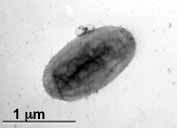Biotransformation plays an important role in the fate and transport of alkanes in the environment. Although aerobic mechanisms and genetics are well-described, very little has been characterized for anaerobic systems. Desulfatibacillum alkenivorans AK-01 was isolated from the Arthur Kill in New Jersey. This site has a history of contamination from the petrochemical industry. AK-01 is a delta-proteobacterium capable of utilizing C13-C18 alkanes as growth substrates (1,2). Analysis of labeled and fully deuterated metabolites shows that AK-01 activates alkanes via fumarate addition to the subterminal carbon (3). Our previous work also demonstrated the presence of two gene clusters in strain AK-01, which contain genes (assA1 and assA2) with high similarity to the active subunit gene of benzylsuccinate synthase (bssA). We have shown, using proteomic analysis, that the expression of a protein transcribed from one of these genes (assA1) correlates with growth on hexadecane (4). Relevant Literature References 1. So, C.M. and L.Y. Young. Isolation and characterization of a sulfate-reducing bacterium that anaerobically degrades alkanes. Appl. Environ. Microbiol. 1999 Jul;65(7):2969-76. 2. So, C.M. and L.Y. Young. Initial reactions in anaerobic alkane degradation by a sulfate reducer, strain AK-01. Appl. Environ. Microbiol. 1999 Dec;65(12):5532-40. 3. Callaghan, A.V., Gieg, L.M., Kropp, K.G., Suflita, J.M. and L.Y. Young. Comparison of mechanisms of alkane metabolism under sulfate-reducing conditions among two bacterial isolates and a bacterial consortium. Appl. Environ. Microbiol. 2006 Jun;72(6):4274-82. 4. Callaghan, A.V., Wawrik, B., Ní Chadhain, S.M., Young, L.Y. and G.J. Zylstra. Anaerobic alkane-degrading strain AK-01 contains two alkylsuccinate synthase genes. Biochem. Biophys. Res. Commun. 2008 Feb 1;366(1):142-8. 5. So, C.M., Phelps, C.D., and L.Y. Young. Anaerobic transformation of alkanes to fatty acids by a sulfate-reducing bacterium, strain Hxd3. Appl Environ Microbiol. 2003 Jul;69(7):3892-900.
|
||
|
||
Desulfatobacillum alkenivorans AK-01

